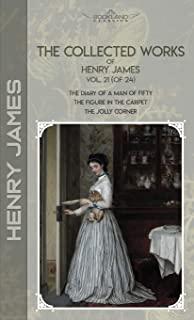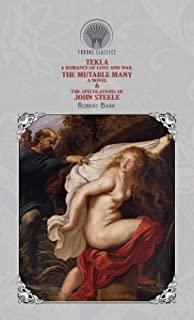
James, Henry
"The Figure in the Carpet" is a short story (sometimes considered a novella) by American writer Henry James first published in 1896. It is told in the first person; the narrator, whose name is never revealed, meets his favorite author and becomes obsessed with discovering the secret meaning or intention of all the author's works.
"The Figure in the Carpet" has evaded definitive interpretation. In his book Henry James (1913), Ford Madox Ford wrote that after it was published, James's contemporaries set themselves on a quest for the Figure as an identifiable physical entity. In the preface to his A Choice of Kipling's Verse (1941), T. S. Eliot wrote, "Nowadays, we all look for the Figure in the Carpet." It is possible that James's Figure is a palpable object that, like a talisman, facilitates interpretation of his own work.
The narrator, a writer for a literary newspaper, prides himself on his astute review of Hugh Vereker's latest novel. Vereker inadvertently dismisses his efforts, and then to repair his incivility, confides in the narrator that all critics have "missed my little point," "the particular thing I've written my books most for," "the thing for the critic to find," "my secret," "like a complex figure in a Persian carpet." The narrator racks his brains and, in desperation, tells his friend Corvick about the puzzle. Corvick and his novelist fianc e, Gwendolen, pursue "the trick" without success until Corvick, traveling alone in India, wires Gwendolen and the narrator "Eureka Immense." He refuses to tell Gwendolen the secret until they are married, and then dies in an accident. Since Gwendolen refuses to share her knowledge, the narrator speculates, "the figure in the carpet was] traceable or describable only for husbands and wives-for lovers supremely united." She remarries, and after her death, the narrator approaches her new husband to discover the secret. But the widowed husband is surprised and humiliated by the news of his late wife's great "secret," and he and the narrator conclude by sharing the same curiosity.
"The Jolly Corner" is a short story by Henry James published first in the magazine The English Review of December, 1908. One of James' most noted ghost stories, "The Jolly Corner" describes the adventures of Spencer Brydon as he prowls the now-empty New York house where he grew up. He encounters a "sensation more complex than had ever before found itself consistent with sanity."
Spencer Brydon returns to New York City after thirty-three years abroad. He has returned to "look at his 'property, '" two buildings, one his boyhood home on "the jolly corner." The second, larger structure is now going to be renovated into a big apartment building. These properties have been the source of his income since the deaths of his family members. Spencer finds he is good at directing this renovation, despite never having done this work before, suggesting that his innate ability for business was hiding deep within him unused. Spencer rekindles a relationship with an old friend, Alice Staverton. Both comment on his "real gift" for business and construction which he also finds "vulgar and sordid." He starts to wonder who he would have been if he had stayed in the U.S.
He starts to prowl the house at night to try to meet his American alter ego. Brydon has begun to realize that he might have been an astute businessman if he hadn't forsaken moneymaking for a more leisurely life. He discusses this possibility with Alice Staverton, his friend who has always lived in New York.
member goods
listens & views

IMPRESSIONS D'ARDENNES: CELLO CONCERTO
by JONGEN / HALLYNCK / KOFMAN / BELGIAN NO
COMPACT DISC$19.25






